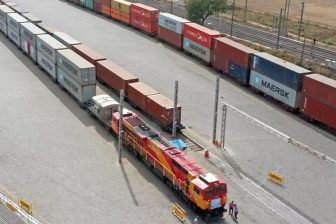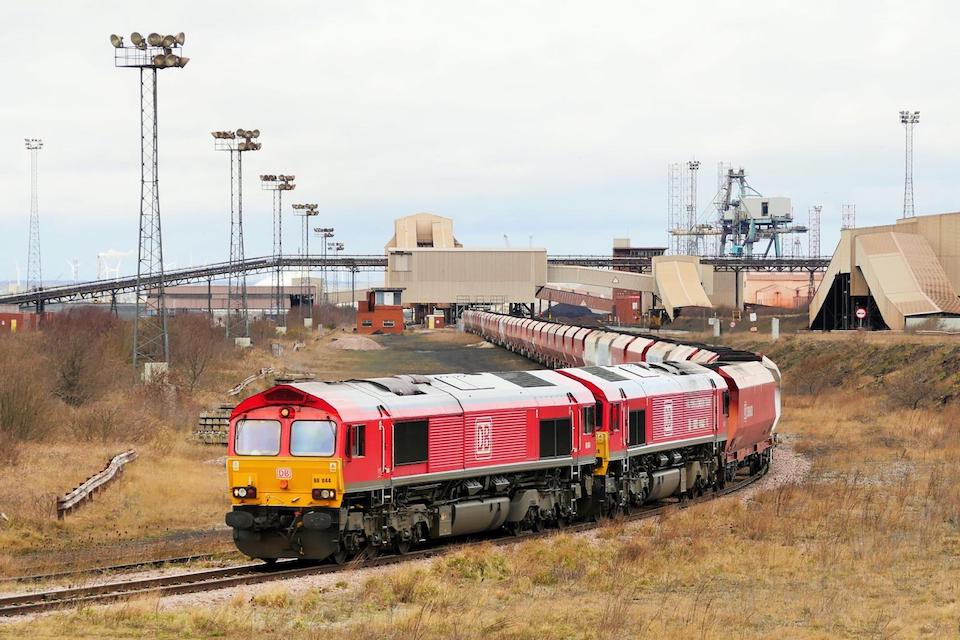Global rail freight worth 250 billion dollars and growing

There is significant international optimism that rail freight will play a huge part in the world-wide economic recovery over the next five years. The sector’s economic contribution has been valued at almost 250 billion US dollars, and is predicted to grow annually by two per cent in the next five years. These are the findings of a report examining the global activity of rail freight.
A report, published by Research and Markets, an American-based specialist in business analysis, has singled out rail freight as a significant area of commercial growth in the next five years. The report suggest that the global rail freight transport market was valued at 247.39 billion US Dollars in 2020, and anticipates a compound annual growth rate (CAGR) of around two per cent over the period 2021-2026. That makes rail freight a significant part of global economic recovery, and has investors taking note.
Global market trends
The report’s authors, Research and Markets, one of the world’s largest specialists in business analysts, have taken a world view of the rail freight sector, with a review of their domestic market in the first instance. “North America leads the global rail freight market”, says the company’s senior press manager Laura Wood. “Asia-Pacific is expected to overtake North America during the forecast period. Moreover, the rise in global trade and various trade agreements are boosting the global trade flows.”

While North America remains a mainstay of rail freight – typically moving three to four times as much market share by rail compared to European markets – the surge in rail is anticipated in Asian markets – such as the recently announced Indian initiative by Maersk. Clearly, the New Silk Road, facilitated by China’s Belt and Road initiative is a significant factor behind that expected Asia-Pacific growth.
Longer-term returns
Traditionally, North America’s freight-orientated railroad system has benefitted from a significant share of non-containerised cargo and liquid bulk, notably oil deliveries. However, according to the report, more boxed cargo is finding its way on to the rails, eroding the dominant position of long-distance trucking. “The growth of intermodal transport is boosting the transport of containerised cargo”, says Research and Markets. “Intermodal cargo is estimated to witness high growth over the forecast period.”
The report examines the longer-term returns investors can expect from rail freight, noting that average tonnage per train is up by 80 per cent in the last decade. That is a trend boosted by significantly heavier operations in North America and in specialist markets, such as bulk raw materials in Australia, where trains of several kilometres have become commonplace. “Rail freight companies continue to invest and reduce costs for customers”, says the report statement. “When shipping by rail, the lower interest costs for the tied-up capital partly cover the higher transportation costs, making rail freight a very cost-efficient shipping alternative.”
Increased economic integration
While rail freight can play a role in globalisation, the report notes that in many regions, rail freight is a factor in developing local economies. “In some regions of Central Asia, Eastern Europe, South Asia, Southeast Asia, and Sub-Saharan Africa characterised by groupings of many small countries, rail freight can increase economic integration by providing access to international and regional markets and connecting landlocked countries”, it says.
However, the report offers some caution to would-be investors, noting that the sector does not have the logistics field to itself. “The rail freight transport market is moderately consolidated in nature, with a mix of global and local players”, it says. “According to industry sources, the rail industry is facing huge competition from road and air.”

British citations
Nevertheless, factors such as the global pandemic and climate change legislation are working in favour of rail freight. “The COVID-19 crisis has resulted in the shortage of truck drivers, restriction on sea and air transport in many countries and regions”, says the report. “The cost of transportation through truck, sea or air has sharply risen as compared to rail freight costs. This has made the shift to rail fright a supply chain advantage.”
The report cites diverse sources including French national operator SNCF and Japan Freight Railway Company. Also among the contributors are DB Cargo and Geneese and Wyoming, the parent company of Freightliner in the UK.
You just read one of our premium articles free of charge
Want full access? Take advantage of our exclusive offer




